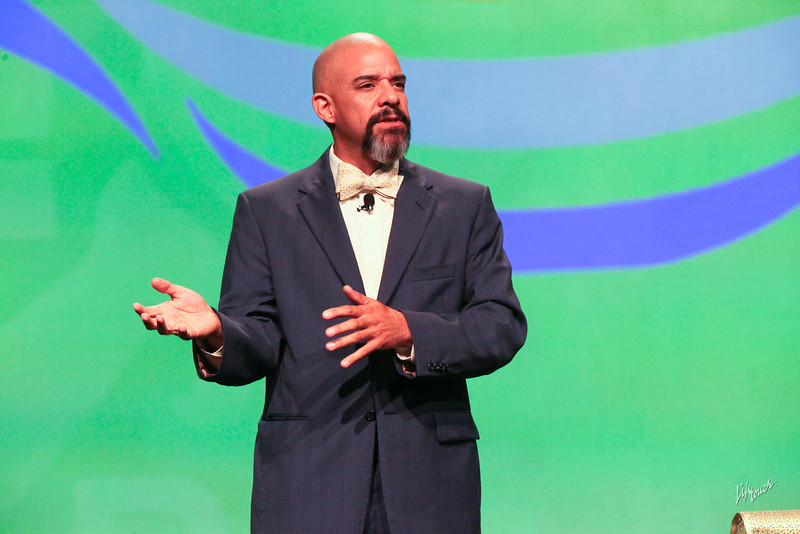Rediscover Your Calling—and Support Your Teachers in Theirs
Conference News Online – 2013 By Robert Shappell
By Robert Shappell
 In the Closing General Session for the NAESP 2013 Annual Conference, Adam Sáenz’s inspirational and emotional stories revolved around a central question: “What are you doing here?”
In the Closing General Session for the NAESP 2013 Annual Conference, Adam Sáenz’s inspirational and emotional stories revolved around a central question: “What are you doing here?”
Sáenz, an author and school psychologist, began the session by recounting his horror stories from substitute teaching. But why was someone with a Ph.D. in psychology and Ivy League training working as a substitute teacher, anyway? Simple: As a psychologist, Sáenz wanted to gain practical teaching experience to be able to recommend behavior interventions to teachers. When teachers asked questions such as, “You want me to do what?” or “Have you ever taught before?,” credibility would be his best defense. Ultimately, though, his experiences as a substitute teacher taught him much more about educators and the kinds of support they need.
Sáenz explains that, when it comes to teaching, there are two realities. The first is that teaching is not a job, or even a career—it is a calling, “where the deepest value system is to change kids’ lives.” The second reality is that good teachers get no satisfaction from the calling. Instead, they find satisfaction in their lives (by balancing the components of their “Life Wheel,” as Sáenz calls it), and take that satisfaction to the calling.
Shifting gears, Sáenz asked attendees to picture a troubled student at their school, and to hold on to that image while he discussed two case studies. The first case was of a young Hispanic male whose life goal was to “push your buttons.” His list of infractions, both in and out of school, was lengthy, and no behavioral interventions were effective. This young man’s life had included friends dying in a drug deal gone bad, witnessing his cousin being sexually assaulted, and being arrested. By age nineteen, depression and drugs consumed him. But the young man stumbled across two inspirational letters from his high school teachers, which inspired him to ask himself, “What am I doing here?” He enrolled in a local community college and eventually earned a Ph.D. and post-doctoral training at Brown University Medical School. That troubled student was Adam Sáenz, who was saved because two teachers brought truth into his life.
Case study number two involved a young Hispanic female who was a product of the foster care system, and, like our speaker, got into trouble both in and out of school. One day, the striking of a judge’s gavel changed her life forever. She was not sentenced to prison, though; she was adopted—by Adam Sáenz and his wife. Sáenz explained to his adopted daughter that she needed to understand two things: first, that she wouldn’t be setting the rules, and second, that it would be his job to lay down his life for her, because she was the most valuable thing on the planet.
As teachers and school administrators, it is crucial that we do the same. We must establish rules for our classrooms and buildings, but we also have to care deeply about our students. Our hope lies in knowing that what we do matters. In some cases, it may be what makes the difference for a child. Sáenz spoke on behalf of those struggling students who, you may worry, might end up in the back of a police car. He thanked us for coming to work every day and for caring. Principals, ultimately, need to help remind teachers that they are making a difference, and help them find the balance they need to devote themselves to supporting all students.
“What am I doing here?” Adam Sáenz explored this idea perfectly as he closed the NAESP 2013 Conference. Now, as we principals return to our schools, we must ask ourselves the same question.
Robert Shappell is principal of Wilbur Watts Intermediate School, Burlington, New Jersey.
Copyright © National Association of Elementary School Principals. No part of the articles in NAESP magazines, newsletters, or Web site may be reproduced in any medium without the permission of the National Association of Elementary School Principals. For more information, view NAESP’s reprint policy.

